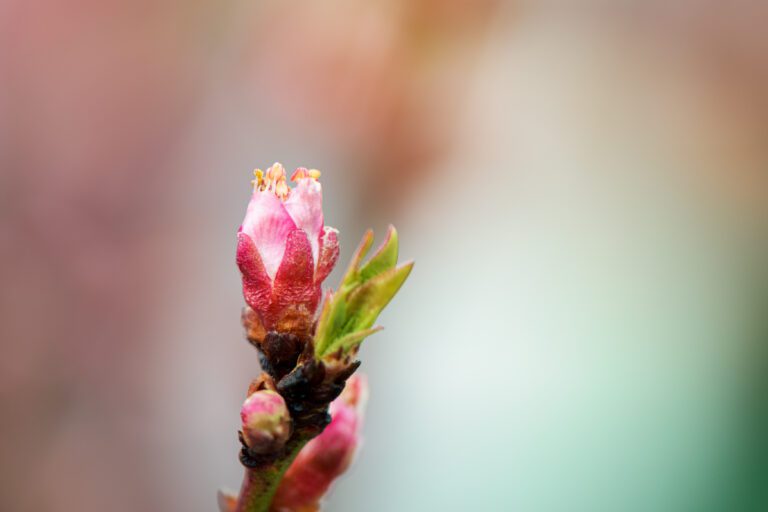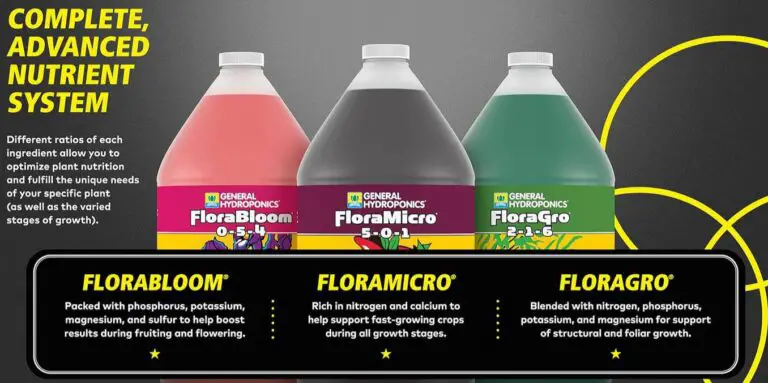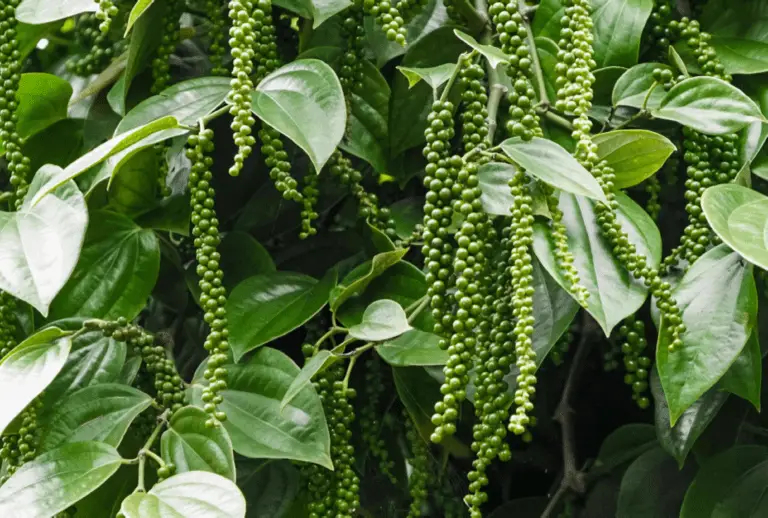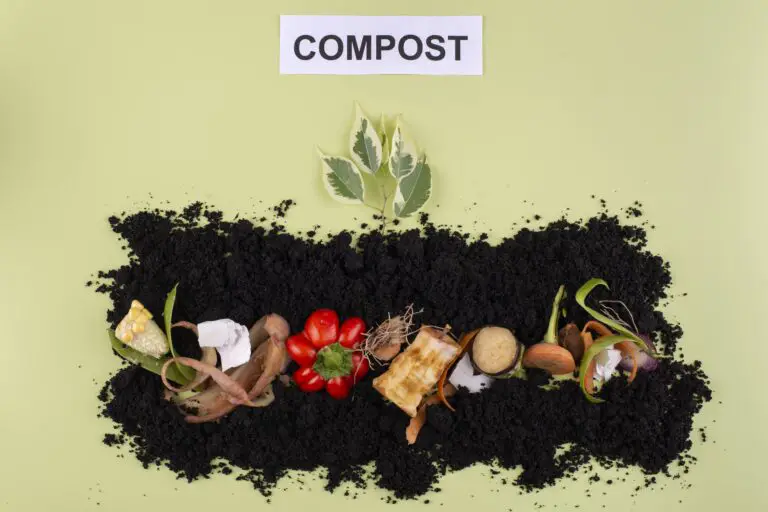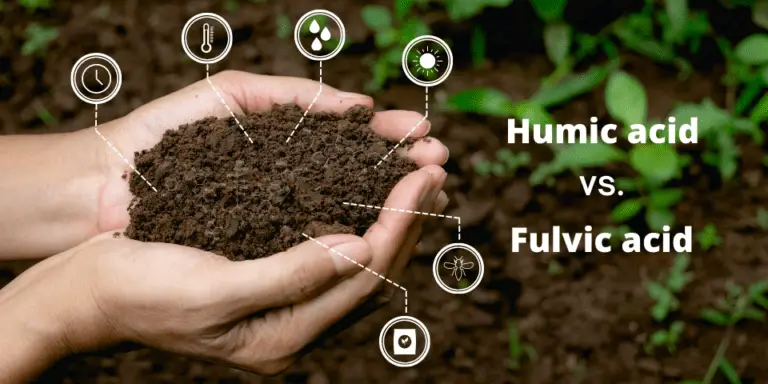BT Spray: the ultimate guide of Useful Bacterial Organic Pesticide
Table of Contents
The Science behind BT Spray: How it Works as an Organic Pesticide
BT spray, short for Bacillus thuringiensis, is a highly effective organic pesticide that has gained popularity among gardeners and farmers seeking safer alternatives to synthetic chemicals. Derived from a naturally occurring bacteria, BT spray works by targeting the digestive systems of pests, making it an incredibly specific and targeted method of pest control.
When BT spray is applied to plants, the bacteria produce a protein crystal toxic to certain pests, particularly caterpillars and worms. Once ingested by these insects, the protein crystal disrupts their gut function and ultimately leads to their death. The precise mode of action of BT spray is what sets it apart from traditional pesticides, as it poses minimal risk to beneficial insects, animals, and humans.
By harnessing the power of nature, BT spray offers a viable solution for controlling pests without causing harm to the environment or compromising the health of plants and surrounding wildlife. As an organic pesticide, it is approved for use in organic farming and gardening practices, providing a safe and sustainable alternative to synthetic chemicals. The advent of BT spray has revolutionized pest management by offering a more targeted and eco-friendly approach that minimizes the negative impact on ecosystems while effectively protecting crops and plants from harmful pests.

The Advantages of BT Spray over Synthetic Pesticides
BT spray, also known as Bacillus thuringiensis, offers several advantages over synthetic pesticides. One significant advantage of BT spray is its targeted action against insect pests. Unlike synthetic pesticides that kill a wide range of insects, BT spray specifically targets certain pests while sparing beneficial insects like bees and ladybugs. This targeted approach ensures effective pest control while minimizing harm to the ecosystem.
Another advantage of BT spray is its safety for human health and the environment. Synthetic pesticides often contain harmful chemicals that can pose risks to human health and contaminate water sources and soil. In contrast, BT spray is derived from naturally occurring bacteria and is considered safe for humans, pets, and the environment. This makes it an excellent choice for organic farming and gardening, as it aligns with sustainable practices and reduces the potential negative impacts on our ecosystem.
By choosing BT spray over synthetic pesticides, gardeners and farmers can enjoy effective pest control while preserving the balance of nature. Its targeted action and safety make it a reliable and sustainable choice in pest management. However, it is important to note that each pest control method has its own strengths and limitations. It is advisable to seek advice from local agricultural extension services or consult with experts to determine the most appropriate pest control strategy for your specific needs.
Common Pests and Insects that BT Spray Effectively Controls
BT spray, also known as Bacillus thuringiensis, is an effective organic pesticide that can target a range of common pests and insects. One notable pest that BT spray effectively controls is the cabbage looper (Trichoplusia ni), a destructive caterpillar that feeds on the leaves of cabbage, cauliflower, and broccoli plants. BT spray contains spores and toxins that are toxic to caterpillars like the cabbage looper, disrupting their digestive system and causing them to stop feeding. This makes BT spray an excellent choice for organic growers looking to protect their cruciferous crops from these voracious pests.
Another pest that BT spray effectively controls is the Colorado potato beetle (Leptinotarsa decemlineata). These beetles are notorious for ravaging potato plants, devouring the leaves and potentially causing severe damage to the crop. BT spray targets the larvae of the Colorado potato beetle, reducing their populations and preventing them from causing extensive harm. By using BT spray as part of an integrated pest management approach, farmers and gardeners can significantly reduce the reliance on synthetic pesticides and promote a healthier ecosystem for their crops and surrounding environment.
Note: The above information is based on scientific studies and experiments conducted by experts in the field. These facts provide valuable insights into the effectiveness of BT spray in controlling common pests and insects.

The Environmental Impact of BT Spray: A Sustainable Choice for Pest Control
BT spray, also known as Bacillus thuringiensis, offers a sustainable choice for pest control that has minimal environmental impact. Unlike synthetic pesticides, BT spray is derived from a naturally occurring bacterium and is highly specific in its target, primarily affecting caterpillar and worm pests. This precision makes BT spray an eco-friendly option as it minimizes harm to beneficial insects, birds, and mammals.
One of the key environmental benefits of BT spray is its low toxicity level to non-target organisms. Its mode of action specifically targets the digestive systems of insects, preventing them from feeding and causing eventual death. This targeted approach means that BT spray poses minimal risk to pollinators, such as bees and butterflies, which are essential for plant reproduction and biodiversity. In fact, research has shown that BT spray has no adverse effects on honey bees or other beneficial insects when used as directed. This makes it an ideal choice for farmers and gardeners looking to protect their crops while preserving the health of the surrounding ecosystem.
Moreover, BT spray has a short persistence in the environment. Once applied, its active ingredient breaks down quickly, reducing the risk of accumulation in soil or water sources. This characteristic further supports its sustainability as it minimizes the potential for long-term environmental contamination. Additionally, its use presents no known risk to human health, enabling safe handling and application by farmers, gardeners, and consumers alike.
By choosing BT spray as a pest control method, gardeners and farmers can make a positive impact on the environment. Its precise targeting, low toxicity to non-target organisms, and short persistence in the environment make it a sustainable choice that promotes a healthy ecosystem while effectively managing pest populations.

How to Properly Apply BT Spray for Maximum Effectiveness
To maximize the effectiveness of BT spray, it is crucial to apply it properly. The following steps will guide you on how to use this organic pesticide effectively:
1. Timing: Timing is key when it comes to applying BT spray. It is important to monitor pest populations and apply the spray when the larvae are actively feeding. This is usually during early morning or late evening when insects are most active.
2. Dilution: BT spray is typically sold as a concentrate that needs to be diluted before use. Follow the instructions on the packaging for the appropriate dilution ratio. It is important to mix the spray thoroughly to ensure an even distribution of the BT solution.
3. Coverage: It is essential to apply BT spray evenly to all parts of the plant, including the undersides of leaves where pests often reside. Use a sprayer or sprayer attachment to ensure thorough coverage. Pay close attention to the target areas and spray until the foliage is visibly wet.
4. Re-application: Depending on the severity of the pest problem, it may be necessary to re-apply BT spray every 7-10 days. This will help ensure continuous protection against pests.
Remember, BT spray is most effective when used as part of an integrated pest management (IPM) system. Regular scouting, monitoring, and cultural practices should be combined with BT spray application for long-term pest control success. By following these guidelines, you can maximize the effectiveness of BT spray and maintain healthy plants in your garden or farm.
BT Spray: A Safe Option for Organic Farming and Gardening
BT Spray is a safe and effective option for organic farming and gardening. This natural pesticide, derived from the bacteria Bacillus thuringiensis, specifically targets and controls harmful pests while leaving beneficial insects unharmed. It is a preferred choice among organic farmers and gardeners due to its minimal impact on human health and the environment.
Unlike synthetic pesticides that often come with a host of health risks, BT Spray offers a non-toxic alternative. It breaks down quickly in the environment, reducing the risk of accumulation or residues on crops. When used as directed, it poses minimal harm to beneficial insects, such as ladybugs and bees, which play a vital role in pollination and maintaining the ecosystem’s balance. This makes BT Spray an ideal option for those seeking safer and more sustainable pest control methods.
In addition to its safety benefits, BT Spray is highly effective in controlling a wide range of pests. It targets the larvae of various insects, including caterpillars, beetles, and mosquitoes. By ingesting the toxin produced by the bacteria, these pests experience digestive disruption and eventually die. This precise mode of action not only ensures effective pest control but also reduces the risk of resistance development, making BT Spray a reliable long-term solution for organic farmers and gardeners.
BT Spray as a Natural Alternative for Controlling Caterpillars and Worms
BT Spray, also known as Bacillus thuringiensis spray, is a natural alternative that effectively controls caterpillars and worms, which are common pests in gardens and agricultural settings. This organic pesticide works by targeting the digestive systems of these insects, causing them to stop feeding and eventually die off.
One of the key advantages of using BT Spray for caterpillar and worm control is its specificity. Unlike synthetic pesticides that can harm beneficial insects, birds, and animals, BT Spray only affects the targeted pests. This makes it a safe and environmentally-friendly choice for organic gardening and farming. Additionally, BT Spray poses no threat to humans or animals, making it an excellent option for those concerned about the potential health risks associated with chemical pesticides.
By utilizing BT Spray, gardeners and farmers can effectively manage caterpillar and worm populations without the need for harsh chemicals. This natural solution not only helps to preserve the overall ecological balance but also assists in maintaining the health and vitality of plants, leading to improved crop yields and overall plant productivity.

The Long-Term Benefits of Using BT Spray in Pest Management
Using BT spray in pest management can offer a range of long-term benefits for both farmers and gardeners. One of the key advantages is its effectiveness in controlling target insects while minimizing harm to beneficial pests, such as bees and butterflies. Unlike synthetic pesticides, BT spray specifically targets the larval stage of pests, such as caterpillars and worms, by releasing toxins that disrupt their digestive systems. This targeted approach not only reduces the risk of developing resistance among pests but also helps maintain a healthier ecosystem in the long run.
Another long-term benefit of BT spray is its compatibility with organic farming practices. Since it is derived from a natural bacterium known as Bacillus thuringiensis, BT spray is considered an organic pesticide. This makes it an ideal choice for those who prioritize sustainable and environmentally-friendly methods of pest control. Furthermore, BT spray has a short persistence in the environment, meaning it does not linger in soil, plants, or water sources, thus minimizing negative impacts on soil health and biodiversity.
BT Spray: A Versatile Solution for a Variety of Crops and Plants
BT Spray is a versatile solution for a wide variety of crops and plants, offering effective pest control without the use of harmful synthetic pesticides. Its versatility lies in its ability to target and control various insect pests, such as caterpillars, worms, and aphids, which can wreak havoc on crops and plants. This organic pesticide is derived from the soil bacterium Bacillus thuringiensis, which produces proteins that are toxic to specific pest insects while being safe for humans, animals, and beneficial insects.
One of the key advantages of BT Spray is its specificity in targeting pests. Unlike synthetic pesticides, which can harm a broad range of insects, BT Spray only affects the target pests, leaving beneficial insects and pollinators unharmed. This selective action helps maintain the balance of the ecosystem and promotes natural pest control. Additionally, BT Spray has been found to have minimal impact on non-target organisms, soil fertility, and water quality, making it a sustainable choice for pest management in agriculture and gardening.
By incorporating BT Spray into their pest control strategies, farmers and gardeners can effectively combat a wide range of pest insects while minimizing harm to the environment. Its versatility in controlling various pests and its environmentally friendly nature make BT Spray a valuable tool for sustainable agriculture and gardening practices. Whether it’s protecting crops, flowers, or vegetable gardens, BT Spray offers a safe and effective solution for pest management in a variety of agricultural and horticultural settings.
Frequently Asked Questions about BT Spray and its Application Methods
BT spray, short for Bacillus thuringiensis spray, is a widely used organic pesticide that is highly effective in controlling various pests and insects. Many gardening enthusiasts have questions regarding the application methods and effectiveness of BT spray. Here are some frequently asked questions about BT spray and its application methods, along with their answers:
1. How does BT spray work as an organic pesticide?
BT spray contains spores and toxins produced by the bacteria Bacillus thuringiensis. When the pests ingest or come into contact with the spray, the toxins attack their digestive system, causing the pests to stop feeding and eventually die. This targeted action makes BT spray highly effective against caterpillars, worms, and other pests, while being safe for humans, beneficial insects, and the environment.
2. What are the proper application methods for BT spray?
BT spray should be applied during the early stages of pest infestation or at the first signs of damage. It is important to thoroughly cover both sides of the leaves, as well as the stems and other affected areas. Follow the instructions provided by the manufacturer for the recommended dosage and timing. It is advisable to apply BT spray in the evening to avoid exposure to direct sunlight, which can degrade the effectiveness of the spray. Additionally, re-application is often necessary after rainfall or irrigation to ensure continued pest control.
BT spray offers a safe and effective alternative to synthetic pesticides, making it a popular choice among organic gardeners. Its targeted action against pests, along with its minimal impact on beneficial insects and the environment, make it a sustainable option for pest control. For more information on the advantages, common pests controlled by BT spray, and the long-term benefits of integrating it into your pest management strategy, continue reading this article.
What is BT spray and how does it work as an organic pesticide?
BT spray is a natural pesticide derived from the bacteria Bacillus thuringiensis. It works by producing toxins that specifically target and kill certain pests, such as caterpillars and worms.
What are the advantages of using BT spray over synthetic pesticides?
BT spray is considered a safer and more environmentally friendly option compared to synthetic pesticides. It only affects targeted pests and does not harm beneficial insects, animals, or humans. Additionally, BT spray breaks down quickly in the environment and does not leave harmful residues on plants or in the soil.
Which pests and insects can BT spray effectively control?
BT spray is particularly effective against caterpillars, worms, and other leaf-eating insects. Common pests controlled by BT spray include cabbage loopers, tomato hornworms, corn borers, and gypsy moths.
What is the environmental impact of using BT spray?
BT spray has a minimal environmental impact. It is considered a sustainable choice for pest control as it specifically targets certain pests, minimizing harm to beneficial insects and the ecosystem as a whole. It also breaks down quickly and does not accumulate in the environment.
How should BT spray be properly applied for maximum effectiveness?
To apply BT spray, thoroughly coat the leaves and stems of the plants being targeted. It is important to follow the manufacturer’s instructions regarding dosage and frequency of application. Apply BT spray when pests are actively feeding for optimal results.
Is BT spray a safe option for organic farming and gardening?
Yes, BT spray is approved for use in organic farming and gardening. It is considered safe for humans, animals, and beneficial insects when used according to instructions. Unlike synthetic pesticides, BT spray does not leave harmful residues on crops.
Can BT spray be used as a natural alternative for controlling caterpillars and worms?
Yes, BT spray is highly effective in controlling caterpillars and worms. Its targeted action specifically affects the digestive system of these pests, leading to their elimination.
What are the long-term benefits of using BT spray in pest management?
Using BT spray as part of an integrated pest management strategy can help reduce the reliance on synthetic pesticides, which can have harmful effects on the environment. BT spray also helps preserve beneficial insect populations and maintains a healthier ecosystem in the long run.
Is BT spray suitable for a variety of crops and plants?
Yes, BT spray is a versatile solution and can be used on various crops and plants. It is commonly used on vegetables, fruits, ornamental plants, and even on certain trees. However, always check the product label for specific crop and plant compatibility.
How can I ensure the best results when using BT spray?
To ensure the best results, it is important to identify the target pests correctly and apply BT spray at the appropriate time. Follow the recommended dosage and application frequency, and monitor the treated plants for any signs of pest activity. Adjust the application as necessary for optimal control.

Beck Wakeford is a dedicated writer at SouthElMonteHydroponics, with a fervent enthusiasm for agriculture and technological innovation. Armed with a degree in Agricultural Engineering from a leading university, Beck specializes in hydroponic systems design, automation, and optimization. Their passion for merging traditional farming with cutting-edge technology drives them to explore novel solutions for sustainable food production. Beck’s expertise and keen interest in the intersection of engineering and agriculture make them a valuable asset in the quest for efficient and eco-friendly farming practices. Through their writing, Beck aims to inspire others to embrace the potential of hydroponics in shaping a more sustainable future.


